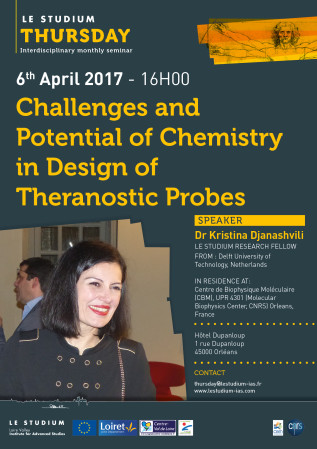Challenges and Potential of Chemistry in Design of Theranostic Probes
Hôtel Dupanloup
1 rue Dupanloup
45000 Orléans
France
Presentation
During the last decades, imaging techniques, such as magnetic resonance (MRI) or nuclear imaging (PET/SPECT) have become very important tools in early diagnosis and treatment of cancer. The research in this field is currently strongly focused on development of highly sensitive, tumour-selective imaging probes, capable of delivery of drugs to the site of interest with the possibility of real-time monitoring of therapeutic outcome. This approach generated the term “theranostics”, which can be defined as agents that combine therapeutic and diagnostic properties. Furthermore, no single imaging technique is sufficient enough to provide all the necessary information for a particular case due to the differences in sensitivity and spatial resolution. Therefore, incorporation of different imaging reporters into one probe offers synergetic advantages over any single modality alone.
Up to date, many therapeutics have failed due to their limited ability to reach the diseased site selectively without damaging healthy cells. The in vivo efficacy often relies on overexpression of specific molecules at the target sites compared to healthy regions and biostability of the theranostic probe. All these considerations leave plenty of room for chemists in design of smart materials for detection of pathological events occurring at molecular and cellular level.
SPEAKER
Dr Kristina Djanashvili
LE STUDIUM RESEARCH FELLOW
FROM : Delft University of Technology, Netherlands
IN RESIDENCE AT:
Centre de Biophysique Moléculaire (CBM), UPR 4301 (Molecular Biophysics Center, CNRS) Orleans, France






